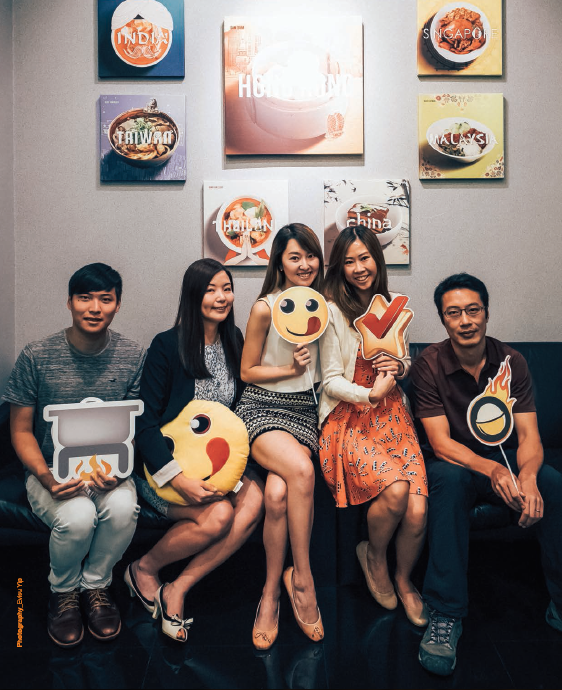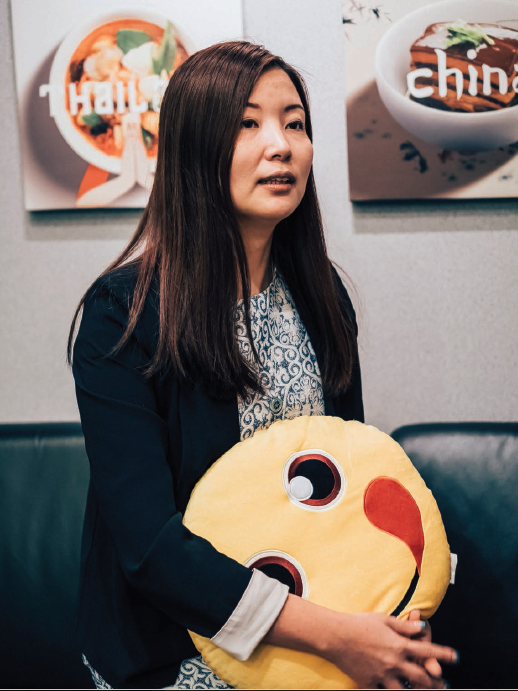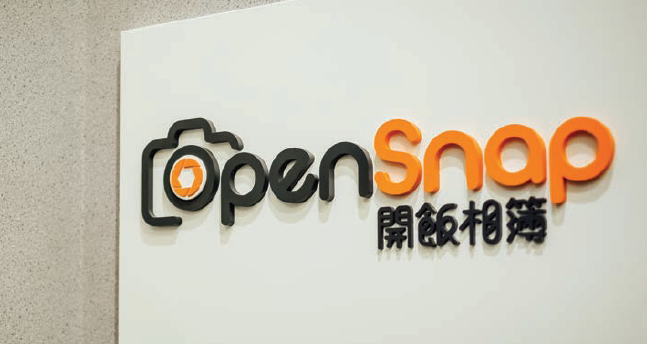
OpenRice spills the beans on its mobile makeover
share on
If there’s anything eternal in life, it is the desire to eat.
Perhaps people in Hong Kong best illustrate this if we look at the impressive numbers of OpenRice, Hong Kong’s most popular online restaurant database and review service, on which one in seven people in Hong Kong is connected to.
The site is not by any means an international online titan, but it’s definitely proving a phenomenon in Hong Kong’s F&B scene.
OpenRice, literally translated as the term “hoi fan” in Cantonese, means to kick off a meal. Established in 1999 by Ray Chung Wai Ming, the site started out with a value “dining experience in sharing”.
This simple concept soon gained favour with the likes of Yahoo and JDB Holdings, with the latter taking it over in 2007.
Today, OpenRice operates in nine countries in Asia, boasting some 1.7 million restaurant partners, more than two million restaurant reviews and a similar number of members.
But perhaps more impressive are the user stats, which to date see around two million unique visitors per month on top of some 40 million page views – the bulk of which visit the site via a mobile device, which spurred its new owners to change its look and feel.
“The website was reorganised when we took it over in 2007. It has great potential,” recalls Jan Wong from her office on the top floor of the 32-storey Prosperity Millennia Plaza.
Graduating with a BSc in phycology from City University of Hong Kong, Wong started her career in public relations, but soon developed an interest in the web while working for Commercial Radio Hong Kong in 2000.
She joined JDB Holdings in 2005 as marketing manager, and two years later took on a higher role as senior business manager at its newly acquired OpenRice business. Four years later she stepped up to general manager and took up the role as managing director in 2014.
Being humble, decent, looking perfectly demure, makes her a nice guest, a good friend (who always knows where to eat), and even an accommodating boss, but she is not one for the limelight.
Getting Wong in front of the camera is no easy task. Before our meeting, she tried to convince me to have the interview without any photos; the reason is to avoid individualism. After some arm-twisting, she finally agreed to have photos with the entire marketing team.
This team of six is responsible for the organisation’s marketing activities from advertising to branding, with a big focus on collaboration with culture and tourism, including the “Restaurant Australia” event last September in partnership with Tourism Australia, and the CCB (Asia) Hong Kong Wine & Dine Festival in partnership with the Hong Kong Tourism Board.
But the most important job of building and guarding the brand’s credibility goes to its operation team, a group of five to six who filter nearly a thousand food reviews daily to make sure they are genuine reviews written by end-users.
The filtering process is essential as protecting the brand’s credibility is critical – given disputes over the authenticity of reviews are always ongoing.
“Determining whether the reviews are authentic or fake is becoming more difficult. We are not only dealing with made-up reviews, which are relatively easy to identify, but also dealing with reviews in grey areas, such as those from writers that are given discounts or incentives on the meals, or from food tasting. What we can do is to have them flagged on the web and let users decide if the reviews are trustworthy.
“No restaurant can buy reviews on our site,” she stresses.
Apart from ferreting out bogus reviews, a lot has been put into building a trustworthy image, such as the annual OpenRice Award given to restaurants, which, according to Wong, is completely free of charge even for gala attendees, as it is purely for brand building for restaurants.
The workload for this small team can only get heavier, alongside consumers’ growing reliance on mobile devices, which makes online reviews come much easier.
The success of OpenRice is, to a certain extent, attributed to the boom of mobile technology, to which ITS performance has been going up and down in tandem with the development of the smartphone.
The dining site had experienced about 13 years of mediocre performance from its launch in 1999 to 2011. It wasn’t until 2012 that the dining site has found its turning point at a time when smartphones outsell PCs worldwide.
“From 2007-11 we did what everybody was doing – like integrating with Google Maps. We started to flourish from 2012 to now – our traffic coming from both desktop web and mobile devices has doubled compared to a year ago.”
The biggest traffic, she says, comes from the OpenRice mobile application with some three million downloads.
The proliferation of smartphones has provided a lift to OpenRice’s business. Since 2012, the company has experienced a more than double-digit year-on-year revenue growth, with its mobile ad revenue starting to surpass desktop since last year, along with visitors.
“One or two years ago, the idea of mobile ad placement was not well accepted by marketers as they still believed web was king. Now desktop-based advertising has become supplemental. Mobile media placement has become highly sought after,” she says, adding although mobile-content consumption is growing, web usage coming from desktop isn’t dropping.
Apart from advertising income, which takes up the largest portion of OpenRice’s overall revenue, a big chunk of the money comes from upgrading packages on restaurants’ profile layouts, and partnerships with credit cards and rewards programmes such as Asia Miles.
To keep the momentum rolling, the team is going to great lengths to leverage the public’s love for taking photos of food to whet users’ appetites.
The trend towards what it calls “camera eats first” has long been popular since the boom of social media, and it has been changing the local dining scene in recent years, Wong notes.
We can see that most restaurants that are active on social media share one distinctive feature – they crossover with poplar cartoon characters that create photo-ops, while the food is not even mentioned,
she says, citing the newly opened Gudetama and Hello Kitty Chinese restaurants, and My Melody & Kuromi Pop-up Café.
To tap this photo-op craze, a photo-driven mobile app OpenSnap was born last year to allow food-selfie addicts to create personalised food albums to which users can locate restaurant spots from.
“Visual information is a very useful source for our database as, generally speaking, restaurants that are viral on Facebook are usually supported by high-quality gourmet photos.”
To stay ahead of the trend, OpenRice will adopt a new layout for restaurant profiles which will see food photos categorised by different dishes according to each restaurant.
The company is also upping its game with content extensions to overseas restaurant-reservation services, targeting mainly restaurants in Japan and Taiwan.
“Users are expecting more these days. They now have their sights set not only on Hong Kong, but worldwide. The high penetration in Hong Kong can benefit the Taiwan market. We travel a lot to Taiwan these days to bring more Taiwan restaurants on board to broaden our scope.”
The Taiwan market is strategically important to the group’s APAC growth because, even though strengthening its business presence in the Mainland has been high on the agenda for a while, the outlook for its business in China remains unclear.
“Doing business in the Mainland is hard,” Wong admits.
“A few years ago we tried to duplicate the same business model in Hong Kong to the Mainland, it didn’t work.
“The Chinese have a strong sense of community which differs from city to city and each community has their own language and behaviour. To tap the China market we have to beat them at their own game, which is hard, because you’ll be fighting against many strong local players in the arena.”
With four offices across the Mainland, including Shenzhen and Shanghai, the company has a profile of more than one million restaurant partners in China.
It is, however, the tip of an iceberg in comparison to some well-developed Chinese crowdsourcing platforms which already own a majority of market share, such as Dianping.
Unlike the Tencent-owned platform, which collects reviews and ratings on almost every areas you can name – from entertainment, sport, dining, travelling, parenting to education and even group-buying – the limitation of information variety on OpenRice is a huge barrier to its business growth.
This issue was taken up, but has been replaced by the idea there is still room for a dedicated dining site with mobile at the core of the user experience.
Two years after its last facelift, which included a new logo, new design layout and enhanced search engine offering, the group is set to launch another major overhaul next month with a bigger focus on its mobile offerings.
Apart from the logo, both its website and mobile application will undergo a complete programme rewrite which is slated to activate in October, putting more emphasis on social media and mobile with additional social sharing and location-based features to cater to some three million of its mobile app users.
One of the most prominent features will see a new social sharing function similar to the likes of WhatsApp and LINE, where users can create a short-list of restaurants to share in group chats.
“We can’t stop people from using WhatsApp as it’s a very well-developed community. What we can do is to connect with the platform via collaboration and partnership to maximise our reach.”
Another two-way collaboration will be the tie-up with mobile food delivery company Foodpanda, which will see OpenRice display a Foodpanda widget on each restaurant profile to allow online food orders, starting next month.
Even with considerable traffic on its primary domain, efforts to maintain a social media presence cannot slacken as part of the branding strategy.
To build the character of the OpenRice brand, the group will fill its Facebook page with more bite-size and multimedia content made up of short videos and appealing visuals.
“The relationship between Facebook and corporations are mutually beneficial. Facebook is merely a social platform without the participation of corporations.
“It did take the F&B industry a little bit too long to realise the importance of digital reputation on social media and on the internet. But it’s not too late. Restaurants are now increasingly embracing the use of social media.”
By the time we walk out of the meeting room it’s almost lunch time, which leads to a discussion as to where to eat nearby. Perhaps the best answer to that is: “Check OpenRice.”
share on
Free newsletter
Get the daily lowdown on Asia's top marketing stories.
We break down the big and messy topics of the day so you're updated on the most important developments in Asia's marketing development – for free.
subscribe now open in new window



